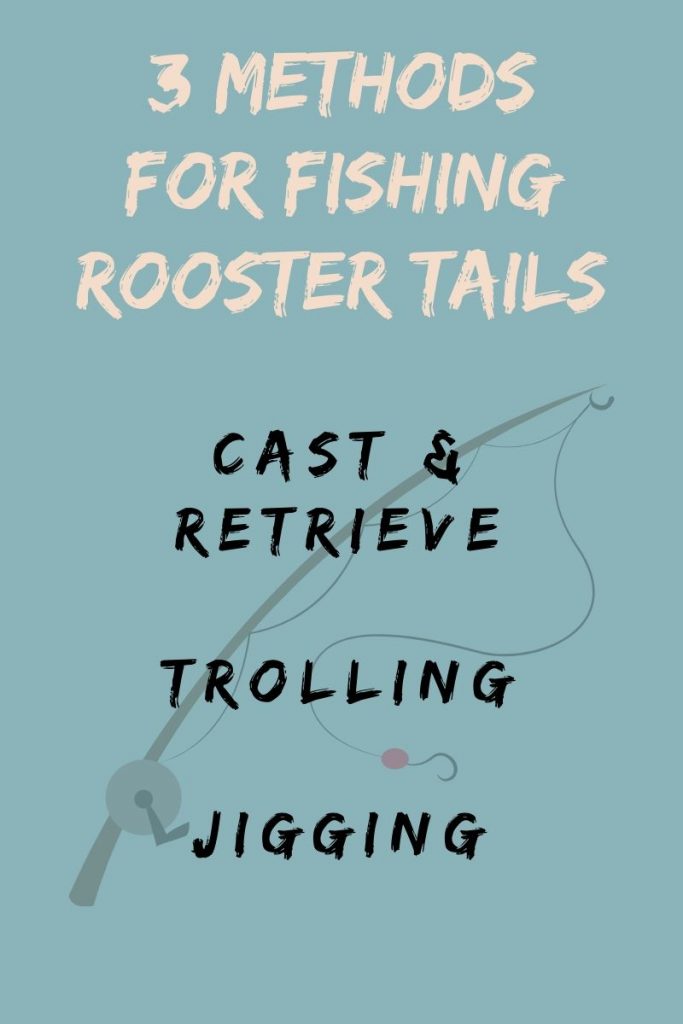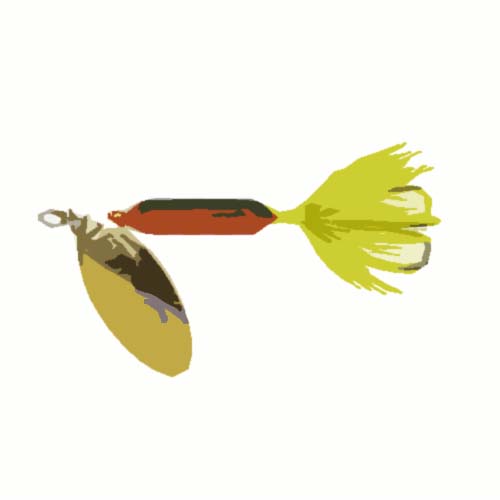Rooster tail spinners are an extremely popular choice when it comes to fishing lures. The color, flash, and vibration of these lures are what cause the hungry fish to strike. These lures have proven time and time again that they work on attracting game fish of every kind. That is why most serious anglers carry one in their tackle box. If you’ve never used a rooster tail lure before then you need to read this guide. Here we will cover how to rig them, and how to fish with them.
What is a Rooster Tail Lure?
Rooster tail lures are a very effective kind of spinner lure that are used by many anglers. The lure features a spinning blade and a vibrant colorful hackle tail that gets the attention of fish. The lure typically works well because of the combination of the spinning blade and pulsating tail.
How To Fish a Rooster Tail Lure

If you’ve never fished with a rooster tail lure before, there are a few different ways that work well depending on the situation.
Cast and Retrieve Method
The most common way to fish a rooster tail spinner is with a simple cast and retrieve method. To do this method, all you need to do is tie the lure to the end of your line and cast it into the water and reel it back to you.
Try to place your lure where the fish you are after are located. If the fish are near the surface cast your lure and retrieve it near the top of the water. If the fish are near the bottom you may need a heavier lure to target the fish in the deeper columns.
When using a rooster tail lure in rivers you want to let the current do a little work. Cast your lure into the river and let the current take it a little, and then retrieve it slowly.
Trolling Method
Trolling is another popular way to use a rooster tail lure. Typically you want to let your lure trail behind the boat about 30 to 100 feet while the boat is moving .5 to 3 miles per hour. Generally slower trolling works best when water is colder, whereas a slightly faster troll might work when waters are a little warmer and the fish are more active.
If you’re not getting any bites when trolling, try adjusting your speed or using a zigzag pattern. Moving along at a zigzag pattern can attract fish that normally wouldn’t bite.
Jigging Method
Lastly, jigging a rooster tail is another extremely productive method. Jigging tends to work well when the fish are swimming in schools. You may want to use a fish finder to find where the fish are congregating. After you’ve found your ideal location, drop your lure to the depth where the fish are.
To jig a rooster tail lure you will have to lift and lower your rod tip so that your lure will flutter as it falls down and produce an attractive darting action. Keep a little bit of slack in the line as the lure falls down and be prepared to immediately set your hook if you feel your lure stops falling.
Tipping Your Lure
If you want to increase the productivity of your lure you may want to tip your lure with a small chunk of live bait or artificial bait. Tipping spinners is a popular way among anglers to make the lure even more attractive to game fish.
What Kind of Fish Do Rooster Tails Work On?
Rooster tails are known to be productive on just about any game fish. They have been used effectively for smallmouth bass, largemouth bass, trout, bluegill, sunfish, crappie, stripers, perch, salmon, steelhead, pike, and variety of panfish.
BUY Yakima Bait Rooster Tail Trophy Pack
Related Posts:
Bass Spinnerbait Reviews
Rainbow Trout Fishing Tips
How to Fish a Wooly Bugger

